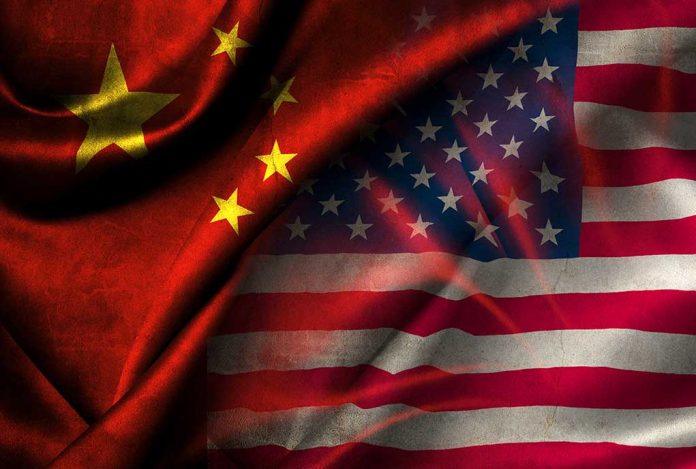
The U.S. deployment of Typhoon missile systems in the Philippines is under severe scrutiny from China, raising tensions in the Indo-Pacific.
At a Glance
- The U.S. deployed Typhoon intermediate-range missile systems in the Philippines, talks ongoing with Japan.
- The deployment is part of routine training, according to Filipino officials.
- China warns this move may increase regional tensions and threaten to respond vigorously.
- The U.S. emphasizes its strategic alliances and military coordination with Asian partners.
Heightened Regional Tensions
The U.S. Typhoon missile system, known for its capacity to launch Tomahawk and Standard Missile-6 weapons, has been deployed indefinitely in the Philippines. Originally brought for joint military exercises in April, its continued presence underscores the U.S. commitment to strengthening its military posture in the Indo-Pacific region. This move aims to bolster regional deterrence amid ongoing territorial disputes in the South China Sea and Taiwan Strait tensions.
Filipino officials assert that the deployment is part of routine training, a claim China disagrees with strongly. The Chinese government alleges that such actions escalate tensions and may prompt an arms race in the region. An indefinite deployment signals to China and other regional actors that the U.S. and its allies are serious about countering potential threats. The U.S. emphasizes the importance of its strategic alliances and military coordination during these uncertain times.
China has been clear about its opposition to the US deployment of Mid-Range Capability missile system in the Philippines. The US must quickly pull out the missile system as publicly pledged. pic.twitter.com/aRuSwkZILv
— Spokesperson发言人办公室 (@MFA_China) September 19, 2024
Strategic Implications
The indefinite deployment of the Typhoon missile system represents a significant upgrade in U.S. capabilities in the Philippines. The deployment aligns with a broader U.S. strategy to maintain a formidable military presence in the Indo-Pacific. Key features of the strategy include reinforcing security commitments with the Philippines and leveraging military sites enabled by the 2014 Enhanced Defense Cooperation Agreement (EDCA). This accord allows the U.S. access to nine military locations within the country.
“In about eight days of exercise, every bit of important ammunition in the British Army’s inventory was expended.” – Gen. Garrett, U.S. Army Forces Command commanding general
Philippine Defense Secretary Gilberto Teodoro vigorously defends the deployment, accusing China of interference and criticizing its military buildup in the South China Sea. Teodoro remains adamant that the Typhoon system should stay permanently in the Philippines for national defense needs. Filipino military leaders echo this sentiment, advocating for its ongoing presence. They believe this move is vital for deterring aggression and preserving sovereignty amidst rising geopolitical tensions.
US missile system will remain in the Philippines despite China's alarm https://t.co/uEUAguoDS1
— The Associated Press (@AP) September 25, 2024
China’s Reaction
China’s response to these developments has been swift and stern. Beijing’s officials have voiced alarm, suggesting that the deployment could destabilize the region. They have expressed intentions to take “vigorous measures” in retaliation, reflecting their concerns that such military enhancements by the U.S. will only exacerbate existing frictions. Additionally, China recalled a recent incident where PRC Southern Theatre Commander General Wu Yanan met with U.S. Indo-Pacific Command chief Admiral Samuel Paparo, emphasizing the need for increased military diplomacy.
The concerns are not unfounded; the Philippine Coast Guard recently resumed patrols of Sabina Shoal to prevent Chinese control, with potential PRC interference in resupply missions. Amid these regional disputes, the deployment of the Typhoon missile system seems poised to further complicate matters. While the U.S. encourages robust defense strategies among its allies, China’s continued objections cannot be ignored. Regional peace and stability hang in the balance as these superpowers navigate an intricate geopolitical landscape.
China ‘dramatically’ alarmed by US missile deployment: Philippines https://t.co/yEywciPFPF
— ArmyTimes (@ArmyTimes) August 19, 2024
Sources
1. The U.S. Defense Industrial Base Is Not Prepared for a Possible Conflict with China















